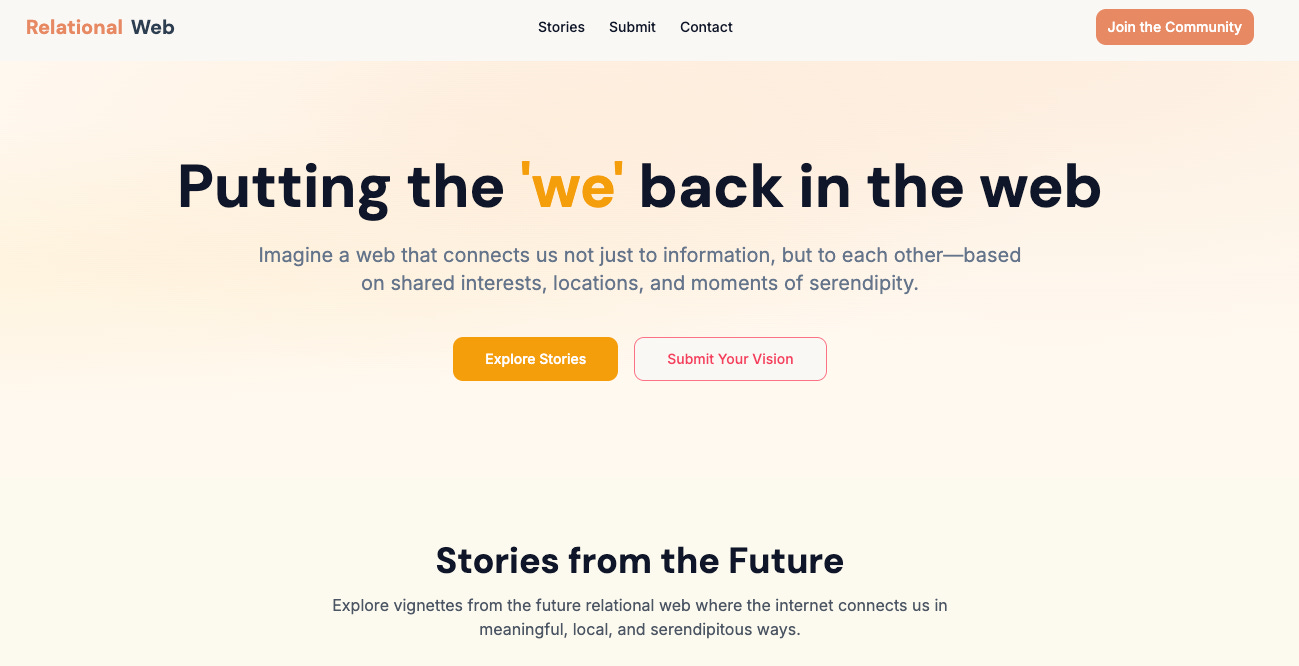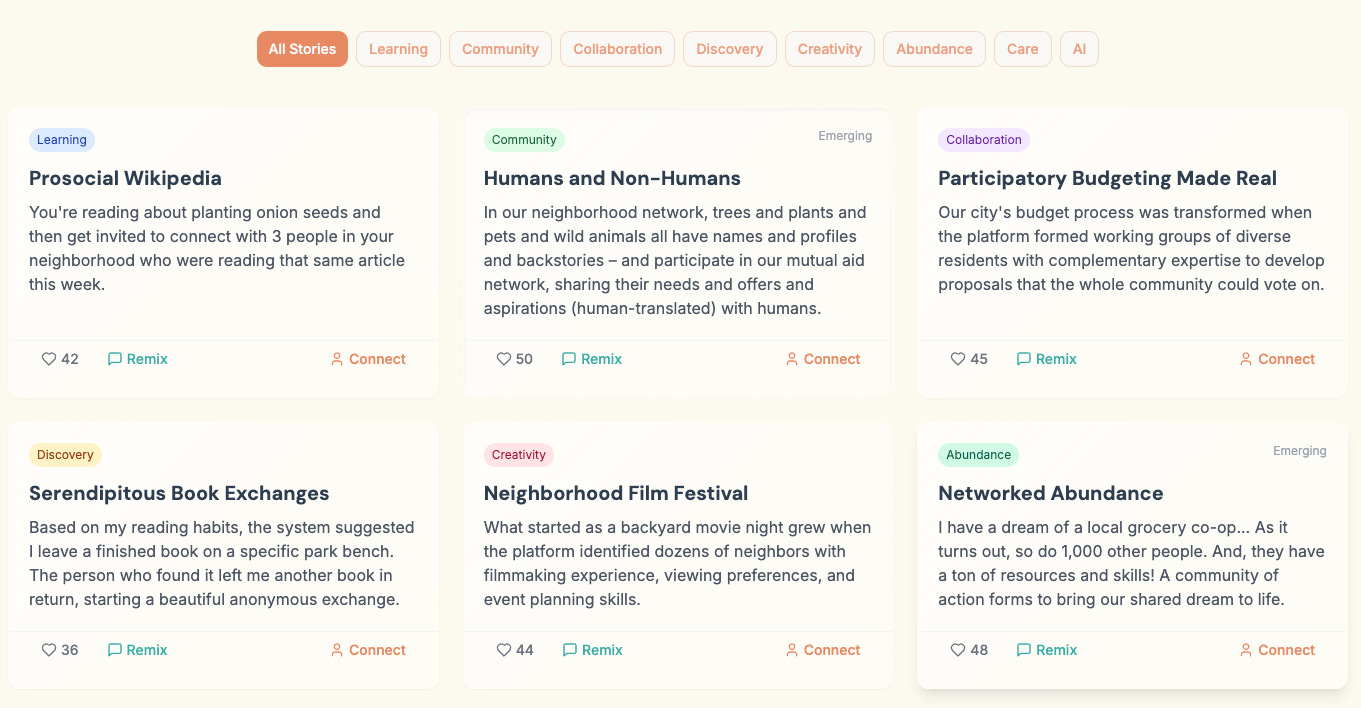We started our Prosocial Club experiment with a question: What happens when people show up online with the simple intent to support one another – and this energy is facilitated?
Not to perform, not to promote, not to debate or scroll or extract, but to care. The participants created a high-trust space where people practiced being generous and human. It worked better than we expected! (You can read more about it at prosocial.club and in earlier posts.)
Among the folks who showed up were technologists, designers, engineers, and community organizers who wondered: What would it mean to build software that actually supports this kind of experience? Could our tools reflect these values? Could we build things that made care easier, not rarer?
This is how the collective visioning process for the Relational Web got started – by a group of people who had just experienced mutual care and support.
So what is the Relational Web?
It’s not a new platform. It’s not a startup. It’s definitely not Web3. 😉
The Relational Web is our shared, emerging vision, shaped by people who believe the internet could feel radically more human. It’s a space to imagine and remember what technology can be for. It’s a chance to trace new patterns – not around scale, extraction, or optimization, but around trust, care, and connection.
It’s an invitation to think together about what prosocial technology might look like – and a space to prefigure the future through stories, connections, and collective creativity.
It lives at relationalweb.org, where you can:
Read short vignettes about what a future relational web does for us.
Remix those stories into your own visions.
Connect with other contributors and join the community.
This project is about discovering and dreaming about a world that we want to live in – and finding other people who want to build it with you.
This is Part One. In the next post, we’ll explore a vision for how we build it. But for now: Come imagine with us at relationalweb.org.





